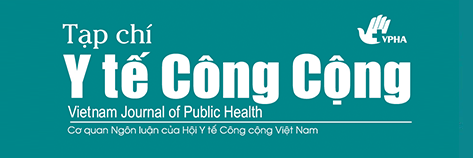Mức độ tham gia cộng đồng của người khuyết tật tuổi lao động tại phường Xuân Hà, TP. Đà Nẵng (Community participation of working-age people with disabilities at Xuan Ha ward Da Nang city)
Tóm tắt
Theo Tổ chức Y tế thế giới, hòa nhập cộng đồng (HNCĐ) là một trong những nội dung cơ bản của chương trình sức khỏe trọng tâm của thế kỷ 21, đây là một trong các yếu tố quyết định nên chất lượng cuộc sống, đặc biệt là đối với người khuyết tật (NKT). Tham gia cộng đồng (TGCĐ) là một trong những nội dung HNCĐ được Việt Nam quan tâm, tuy nhiên hiện nay, các nghiên cứu về vấn đề này cho NKT còn hạn chế. Nghiên cứu của chúng tôi được thực hiện cắt ngang trên 288 NKT tuổi lao động tại phường Xuân Hà, quận Thanh Khê, thành phố Đà Nẵng nhằm tìm hiểu mức độ TGCĐ của NKT và các yếu tố liên quan. Kết quả cho thấy, tỷ lệ NKT tham gia tốt là 20,5%. Các yếu tố giới, học vấn, hôn nhân, mức độ khuyết tật có liên quan đến TGCĐ. Kết quả của chúng tôi gợi ý cần nghiên cứu các yếu tố liên quan đến TGCĐ từ khía cạnh y tế, xã hội nhằm đề ra giải pháp cụ thể giúp NKT có thể hòa nhập tốt hơn.
English abstract:
According to WHO, community integration is one of basic contents of important health program in the 21st century. It is a determinant for the quality of life of people, especially for people with disabilities (PWDs). Community participation is one of the criteria of community integration that Viet Nam is interested in. Currently, only a limited number of researches on community participation can be found. The purpose of our cross-sectional study with 288 working-age PWDs at Xuan Ha ward, Thanh Khe district, Da Nang city is to find out their community participation's level and some relative factors. The results show that 20.5% of PWDs were good at participation. Sex, education, marital status, and hard level of disability are factors related to community participation. The study suggests that health and social activities limiting the participation of PWDs need to be explored in order to identify solutions to assist better integration of PWDs.
Từ khóa
Toàn văn:
PDF (English)##submission.citations##
Tiếng Việt
Sở Lao động Thương binh và Xã hội thành phố Đà Nẵng (2011), Báo cáo điều tra khuyết tật tại thành phố Đà Nẵng năm 2009 - 2011.
UNFPA (2009), Người khuyết tật ở Việt Nam: Một số kết quả chủ yếu từ tổng điều tra Dân số và nhà ở Việt Nam 2009
Ủy ban Nhân dân quận Thanh Khê (2012), Báo cáo tình hình kinh tế, chính trị, xã hội 6 tháng đầu năm 2012.
Tiếng Anh
Chutima Jalayondeja, Jaranit Kaewkungwal and Patricia E Sullivan (2011), "Factors related to community participation by stroke victims six month post-stroke", Southeast Asian Journal Tropical Medicine Public health. 42(4), pg. 1005 - 1013.
George S. Gotto, Carl F. Calkins and Laura Jackson (2010), Accessing social capital implications for persons with disabilities, A National Gateway to self-determination.
Helen Berry and Megan Shipley (2009), Longing to belong: personal social capital and psychological distress in an Australian coastal region, ANU College of Medicine, Biology and Environment.
Mark Salzer, Richard C.Baron (2006), Community integration and measuring participation, University of Pennsylvania School of Medicine Philadelphia, Pennsylvania.
Nguyen Thi Minh Thuy and Helen L Berry (2008), Social capital and mental health among mothers in Vietnam who have children with disabilities.
WHO (2001), Community participation in local health and sustainable development - Approaches and techniques.
WHO (2011), World report on disability.
Widmer et al. (2008), "How central and connected am I in my family? Family - based social capital of individuals with intellectual disability", Research in developmental disabilities. 29(2008), pg. 176 - 187.



